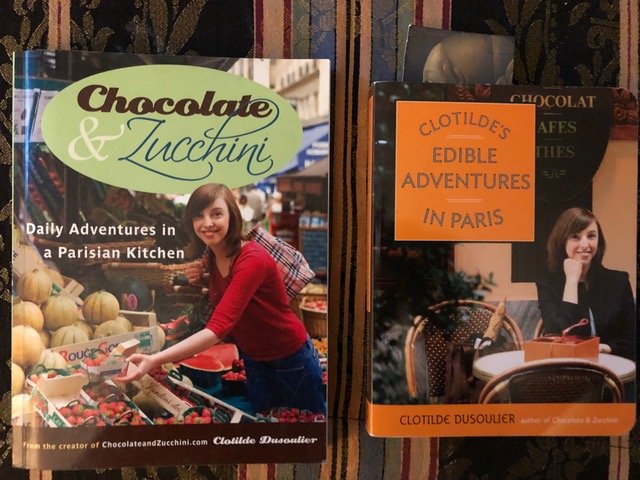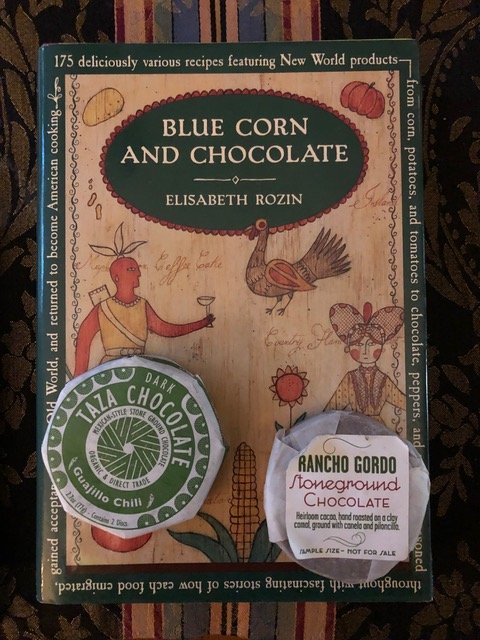Adventures with Chocolate
This week the Winter Olympics in Beijing, Super Bowl XVI in Los Angeles, and Valentine’s Day in Nevada City all got me to thinking about chocolate. Part of the inspiration to cook epicuriously with chocolate comes from edible adventures I’ve been on while following a food blog written by Clotilde Dusoulier. The Parisian has been sharing her passion for food on her blog “Chocolate & Zucchini” since 2003 when she was 24 years old.
Clothilde claims not to have named her blog after a cake that includes the two named ingredients but has had fun testing recipes shared by bakers and readers of her blog over the years, blending the best of their suggestions with a family recipe for chocolate cake. When asked why she adds grated zucchini, her answer is simple. “It provides moisture, reduces the amount of butter needed, and you won’t taste the zucchini because it melts into the batter and disappears.”
Clotilde’s Chocolate & Zucchini Cake combines all-purpose flour, unsweetened cocoa powder, baking soda, baking powder, sea salt, light brown sugar, unsalted butter or olive oil, vanilla, instant coffee granules or strong cooled coffee, eggs, unpeeled grated zucchini, chocolate chips, and confectioner’s sugar (optional). For baking directions and a thousand other edible adventures, Clotilde’s creative and informative foodie website can be found at: http://chocolateandzucchini.com
Clotilde describes her newsletters as “virtual table conversations.” In that spirit, I told her about two edible adventures of my own. The first occurred in 1975 while I was on a month-long journey across Asia that included Hong Kong, Thailand, Laos, Burma, India, and Nepal. While in Nepal, I trekked for two weeks in the Annapurna region of the Himalayas with my sister Molly and a friend, Paul Langer.
Our trekking party’s Sherpa cook, Pasang, prepared meals over an open wood fire using a cast iron Dutch oven—much like those that cowboy cooks used to make cowpoke beans and cooks in Provence use to make classic French cassoulet. What emerged from Pasang’s oven depended on what seasonings he had packed along and what he purchased from local farmers each day—pumpkins, chickens, potatoes, onions, carrots, peas, lentils, and cauliflower—as our party climbed ever higher from one mountain village to the next.
On the inside cover of the pocket-sized journal that I kept during the trek is a recipe for Pasang’s Tibetan bread. What made it magic was the subtlest of seasonings and most unexpected—two tablespoons of chocolate powder which he added to 6-7 big eggs, 2 cups of wheat flour, ½ cup of sugar, 1 tsp. baking powder, 1 cup of water, and 6-7 big spoons of butter. After rising, the bread dough was baked in Pasang’s oven over a wood fire.
Then, I shared with Clothilde the history of Cincinnati Chili that I’d discovered in 2010 in Saveur magazine. Described as “redolent of warm spices and an American classic,” the recipe’s ground beef, garlic and onions are seasoned with chili powder, ground cinnamon, allspice, cloves, cumin, oregano, nutmeg, celery seed, bay leaf, and an additional secret ingredient—unsweetened cocoa powder.
As a young child in Kastoria, Greece, Nicholas Lambrinides watched his mother lovingly blend magical flavors in the family’s kitchen. The family immigrated to America in 1912 and settled in the Midwestern town of Cincinnati, Ohio. In 1949, Nicholas founded his first restaurant, inspired by his mother’s recipes, atop Price Hill with a view of the downtown—a location that inspired its name—Skyline Chili.
The tradition of using chocolate as a seasoning had crossed the Atlantic centuries earlier. Elisabeth Rozin’s book, Blue Corn and Chocolate (1992) reminds us that five hundred years earlier, foods like tomatoes, potatoes, peppers, chocolate, and vanilla had been brought from the New World to the Old World.
“Each food,” Rozin writes, “has a story: how it was discovered, how it was greeted in its adopted countries and then integrated into Old World cuisine, how it returned here in dishes that immigrants brought with them, and how it has become a part of mainstream American cooking.”
In Rozin’s chapter on chocolate and vanilla, the first recipe she shares is Chocolate Chili served over rice. Nicholas Lambrinides served his Cincinnati Chili over spaghetti.
So it is that I was inspired to add a few tablespoons of cocoa powder to the pot of chili that I made for the Super Bowl game (the L.A. Rams vs. the Cincinnati Bengals) and Valentine’s Day. Who to root for? Kit and I fell in love in Los Angeles in 1977 and have a deep history there. In earlier chapters of life, both Kit and his parents went to college in Oberlin, Ohio. Only one thing was certain that Sunday. Bengals fans would be serving their chocolate infused chili Cincinnati style—over spaghetti with sides of grated cheddar cheese, red kidney beans, chopped onion, and oyster crackers.
Using chocolate as a seasoning is a part of America’s culinary and immigrant history. In the same way, love is the magic common ingredient that connects us all and makes the world a kinder place. Share the love. Visit: thecommoningredient.com.




